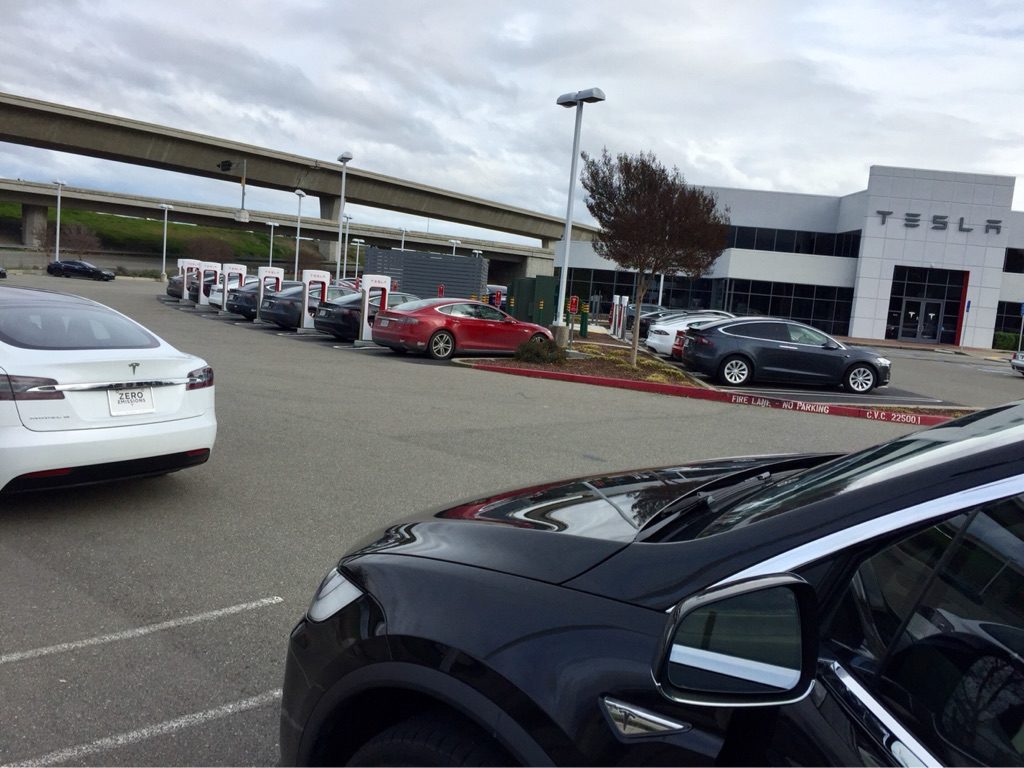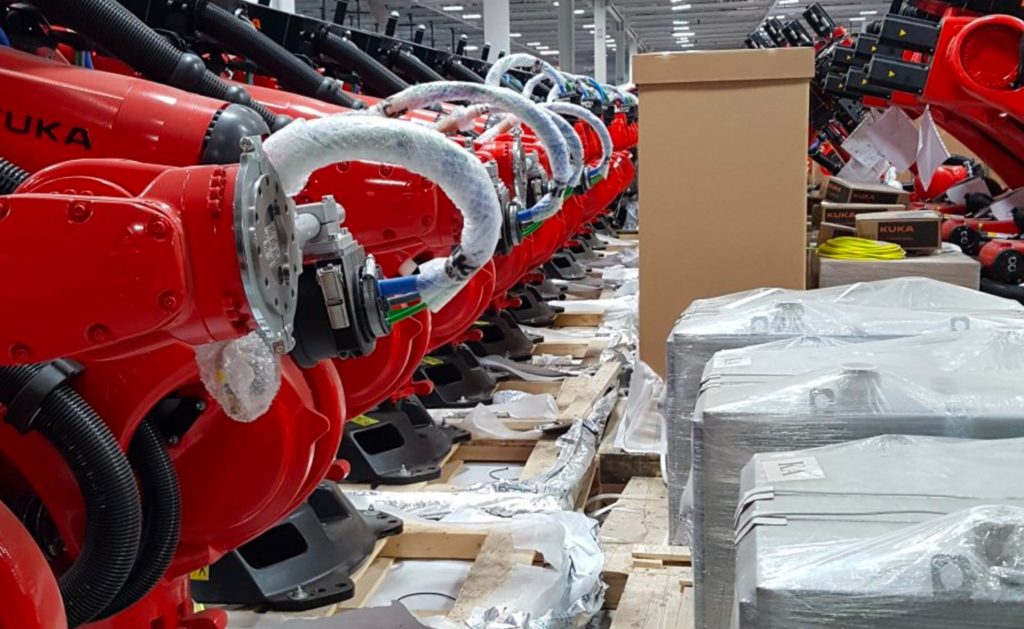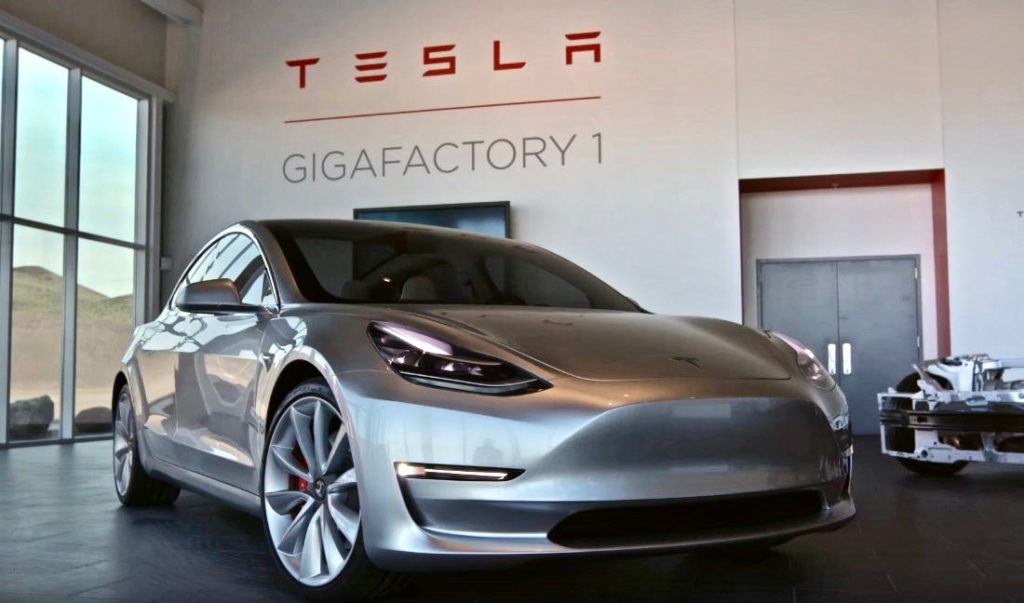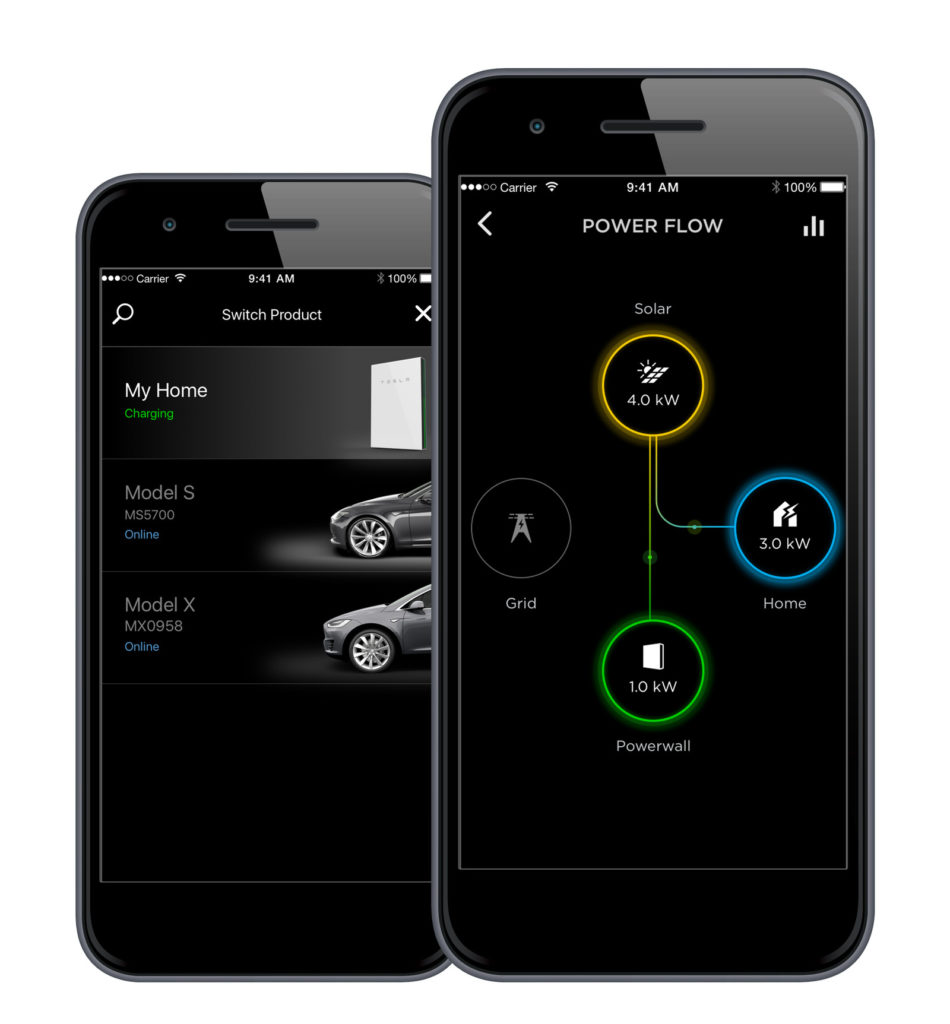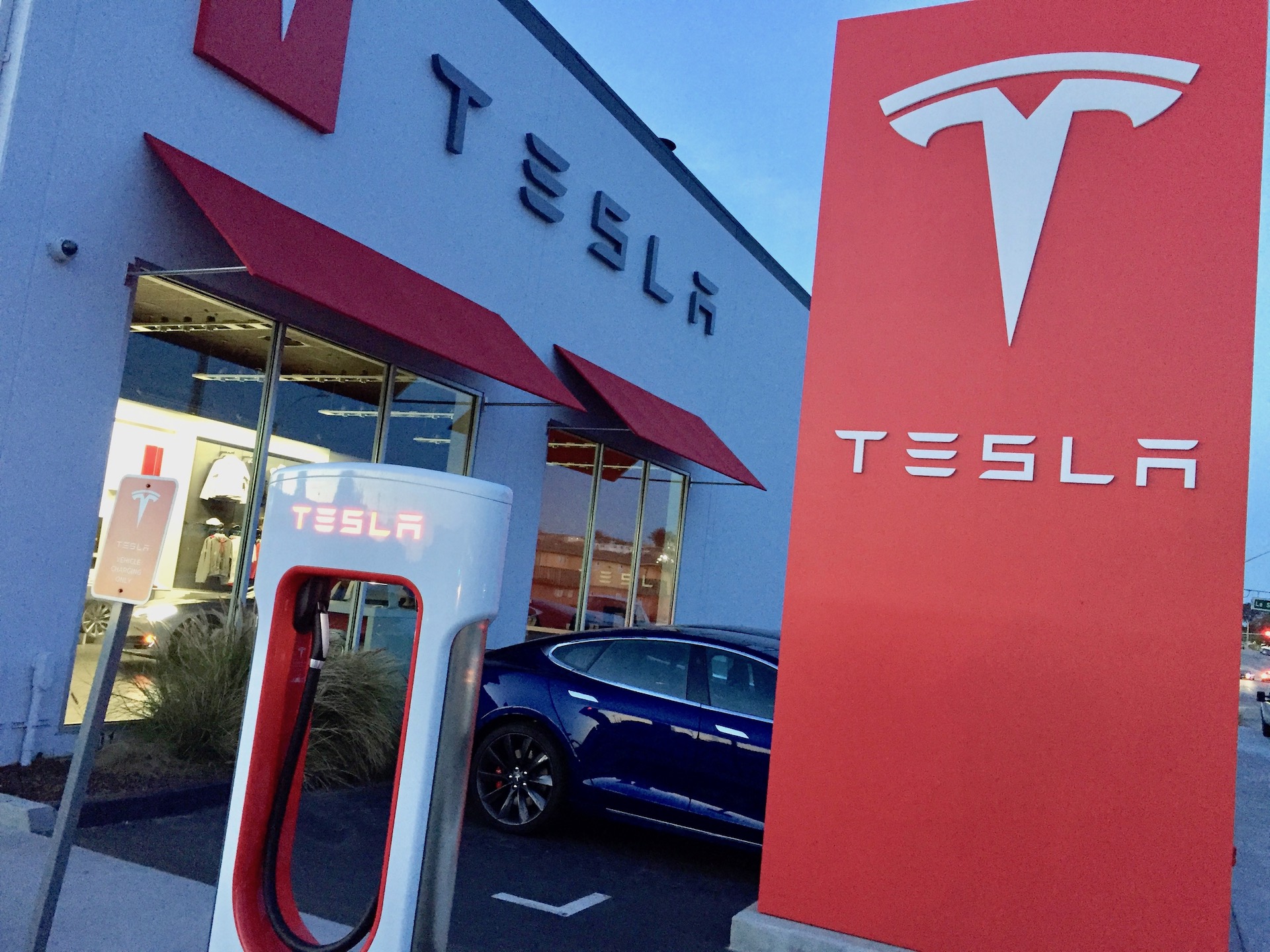
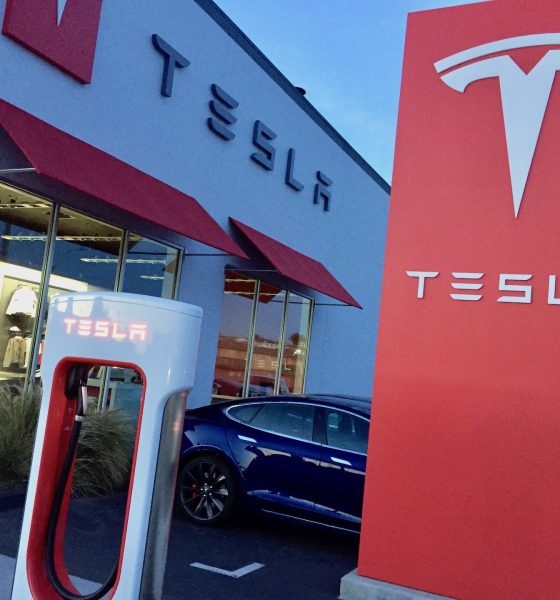
Energy
2X Superchargers, Model 3 robots, mobile app update: Tesla week in review
The top stories this week on Teslarati focused almost exclusively on Tesla’s constant innovations, with just a bit of ennui thrown in about one Tesla software update oversight. Tesla’s announcement that it would be increasing its Supercharger network was greeted with great enthusiasm, as were reports from some Tesla owners touring the factory who saw a number of Kuka robots aimed at Model 3 production.
Updates to Tesla iOS and Android apps will help Powerwall and other Tesla product owners to have increased control, while Consumer Reports decried Tesla’s foot-dragging in updating its automatic emergency braking software. Here are those stories and more on our “Tesla week in review.”
Tesla prioritizes Supercharger expansion “so drivers never wait to charge”
In order to expand the capacity of its network of fast electric car chargers as well as to shorten wait times at existing stations, Tesla has announced that it will double the number of Supercharger stations in 2017. The upcoming Tesla Model 3, which has a mass market target audience, is a significant motivation for the all-electric car company to refine its charging network. The goal is to increase the 5,000 Superchargers around the world to a total of 10,000 by the end of the year.
The announcement also included the company’s intention to build larger Supercharger sites along the busiest travel routes and in areas further away from the highway for the convenience of local drivers.
Leaked Tesla factory photos reveal ‘alien’ robot army for Model 3 production line
Advanced robots will play a significant role in Tesla’s Model 3 manufacturing process as the company continues to hold to its July production start date. The company is reported to have had nearly 500 new robots delivered recently. They seem to be part of the Model 3 “alien dreadnought” production line that Tesla CEO Elon Musk predicted last summer during an earnings call.
Tesla bets big as factory prepares for Model 3 final production tooling
Tesla will be relying on “advanced analytical techniques,” or computer simulations, to test the Model 3. Generally, auto manufacturers look to a beta production phase in which prototype tooling fosters a small run of pilot cars that are evaluated for reliability. Skipping this usual step will allow Tesla to cut costs and speed up delivery time. Tesla is not alone in looking to computer generation as forerunner to actual production. Audi initiated production at its new Mexico plant using computer simulations of production tools, the entire assembly line, and factory, which accelerated production 30 percent faster than anticipated. Tesla is betting that it can produce cars that present with consistent tolerances and lack of quality-control issues, which have plagued previous Tesla model releases.
Tesla updates mobile app with Powerwall and solar energy monitoring features
In order to provide Powerwall owners with up-to-date information about solar power generation, battery power flow, household energy consumption, and the like, Tesla has updated its iOS and Android apps. The app update will allow owners to monitor other Tesla products, too, like their Model S and Model X vehicles. For example, if a power outage were to be likely, owners can now adjust the amount of power stored by their Powerwall home battery pack. App users access a new “Power Flow” screen to assess household energy storage and consumption by connected Tesla Energy products.
CR downgrades Tesla Model S, X over missing automatic emergency braking feature
In response to Tesla’s perceived failure to update software that would have enabled automatic emergency braking (AEB) in versions built since October, 2016, Consumer Rreports has cut its ratings for both models. “When we purchased our latest test car, we were assured automatic emergency braking would be enabled by the end of 2016,” said Jake Fisher, director of CR’s Auto Test Center. CR consistently applies higher scores to vehicles with AEB as a standard feature, which the organization believes reduces crashes and cuts the likelihood of serious injuries.

Cybertruck
Tesla updates Cybertruck owners about key Powershare feature

Tesla is updating Cybertruck owners on its timeline of a massive feature that has yet to ship: Powershare with Powerwall.
Powershare is a bidirectional charging feature exclusive to Cybertruck, which allows the vehicle’s battery to act as a portable power source for homes, appliances, tools, other EVs, and more. It was announced in late 2023 as part of Tesla’s push into vehicle-to-everything energy sharing, and acting as a giant portable charger is the main advantage, as it can provide backup power during outages.
Cybertruck’s Powershare system supports both vehicle-to-load (V2L) and vehicle-to-home (V2H), making it flexible and well-rounded for a variety of applications.
However, even though the feature was promised with Cybertruck, it has yet to be shipped to vehicles. Tesla communicated with owners through email recently regarding Powershare with Powerwall, which essentially has the pickup act as an extended battery.
Powerwall discharge would be prioritized before tapping into the truck’s larger pack.
However, Tesla is still working on getting the feature out to owners, an email said:
“We’re writing to let you know that the Powershare with Powerwall feature is still in development and is now scheduled for release in mid-2026.
This new release date gives us additional time to design and test this feature, ensuring its ability to communicate and optimize energy sharing between your vehicle and many configurations and generations of Powerwall. We are also using this time to develop additional Powershare features that will help us continue to accelerate the world’s transition to sustainable energy.”
Owners have expressed some real disappointment in Tesla’s continuous delays in releasing the feature, as it was expected to be released by late 2024, but now has been pushed back several times to mid-2026, according to the email.
Foundation Series Cybertruck buyers paid extra, expecting the feature to be rolled out with their vehicle upon pickup.
Cybertruck’s Lead Engineer, Wes Morrill, even commented on the holdup:
As a Cybertruck owner who also has Powerwall, I empathize with the disappointed comments.
To their credit, the team has delivered powershare functionality to Cybertruck customers who otherwise have no backup with development of the powershare gateway. As well as those with solar…
— Wes (@wmorrill3) December 12, 2025
He said that “it turned out to be much harder than anticipated to make powershare work seamlessly with existing Powerwalls through existing wall connectors. Two grid-forming devices need to negotiate who will form and who will follow, depending on the state of charge of each, and they need to do this without a network and through multiple generations of hardware, and test and validate this process through rigorous certifications to ensure grid safety.”
It’s nice to see the transparency, but it is justified for some Cybertruck owners to feel like they’ve been bait-and-switched.
Energy
Tesla starts hiring efforts for Texas Megafactory
Tesla’s Brookshire site is expected to produce 10,000 Megapacks annually, equal to 40 gigawatt hours of energy storage.

Tesla has officially begun hiring for its new $200 million Megafactory in Brookshire, Texas, a manufacturing hub expected to employ 1,500 people by 2028. The facility, which will build Tesla’s grid-scale Megapack batteries, is part of the company’s growing energy storage footprint.
Tesla’s hiring efforts for the Texas Megafactory are hinted at by the job openings currently active on the company’s Careers website.
Tesla’s Texas Megafactory
Tesla’s Brookshire site is expected to produce 10,000 Megapacks annually, equal to 40 gigawatt hours of energy storage, similar to the Lathrop Megafactory in California. Tesla’s Careers website currently lists over 30 job openings for the site, from engineers, welders, and project managers. Each of the openings is listed for Brookshire, Texas.
The company has leased two buildings in Empire West Business Park, with over $194 million in combined property and equipment investment. Tesla’s agreement with Waller County includes a 60% property tax abatement, contingent on meeting employment benchmarks: 375 jobs by 2026, 750 by 2027, and 1,500 by 2028, as noted in a report from the Houston Business Journal. Tesla is required to employ at least 1,500 workers in the facility through the rest of the 10-year abatement period.
Tesla’s clean energy boom
City officials have stated that Tesla’s arrival marks a turning point for the Texas city, as it highlights a shift from logistics to advanced clean energy manufacturing. Ramiro Bautista from Brookshire’s economic development office, highlighted this in a comment to the Journal.
“(Tesla) has great-paying jobs. Not just that, but the advanced manufacturing (and) clean energy is coming to the area,” he said. “So it’s not just your normal logistics manufacturing. This is advanced manufacturing coming to this area, and this brings a different type of job and investment into the local economy.”
Energy
Tesla and Samsung SDI in talks over new US battery storage deal: report
The update was related by industry sources and initially reported by South Korean news outlets.

Recent reports have suggested that Tesla and Samsung SDI are in talks over a potential partnership to supply batteries for large-scale energy storage systems (ESS).
The update was related by industry sources and initially reported by South Korean news outlets.
ESS batteries to be built at Samsung’s Indiana plant
As noted in a report from Korea JoongAng Daily, the demand for energy storage systems has been growing rapidly in North America, thanks in no small part to the surge in AI investments across numerous companies. With this in mind, Tesla has reportedly approached Samsung SDI about a potential battery supply deal.
The deal is reportedly worth over 3 trillion Korean won (approximately $2.11 billion) and will span three years, according to The Korea Global Economic Daily. A battery supply deal with Samsung SDI could make sense for Tesla as the company already has a grid-scale battery, the Megapack, which is perfect for industrial use. Samsung SDI could simply supply cells for the EV maker.
Production of the batteries would reportedly take place at Samsung SDI’s joint venture factory with Stellantis in Indiana, which is currently under construction. Samsung SDI recently announced plans to use part of that plant’s EV lines to produce cells for ESS, with a targeted capacity of 30 GWh by the end of next year.
Tesla and Samsung’s partnership
At present, only a handful of manufacturers, including Korea’s LG Energy Solution, Samsung SDI, SK On, and Japan’s Panasonic, are capable of producing energy storage-scale batteries domestically in the United States. A Samsung SDI official issued a comment about the matter, stating, “Nothing has been finalized regarding cooperation with Tesla.”
The possible energy storage system deal adds another layer to Tesla’s growing collaboration with Samsung, which is already in line as a partner in the upcoming production of Tesla’s AI5 and AI6 chips. Early sample manufacturing of the AI6 is expected to begin in South Korea, with mass production slated for Samsung’s Texas-based Taylor foundry when it starts operations.
The AI6 chip will power Tesla’s next wave of high-volume projects, including the Optimus humanoid robot and the autonomous Cybercab service. Musk has called the partnership with Samsung a “real collaboration,” adding that he personally plans to “walk the line” at the Taylor facility to speed up progress.
